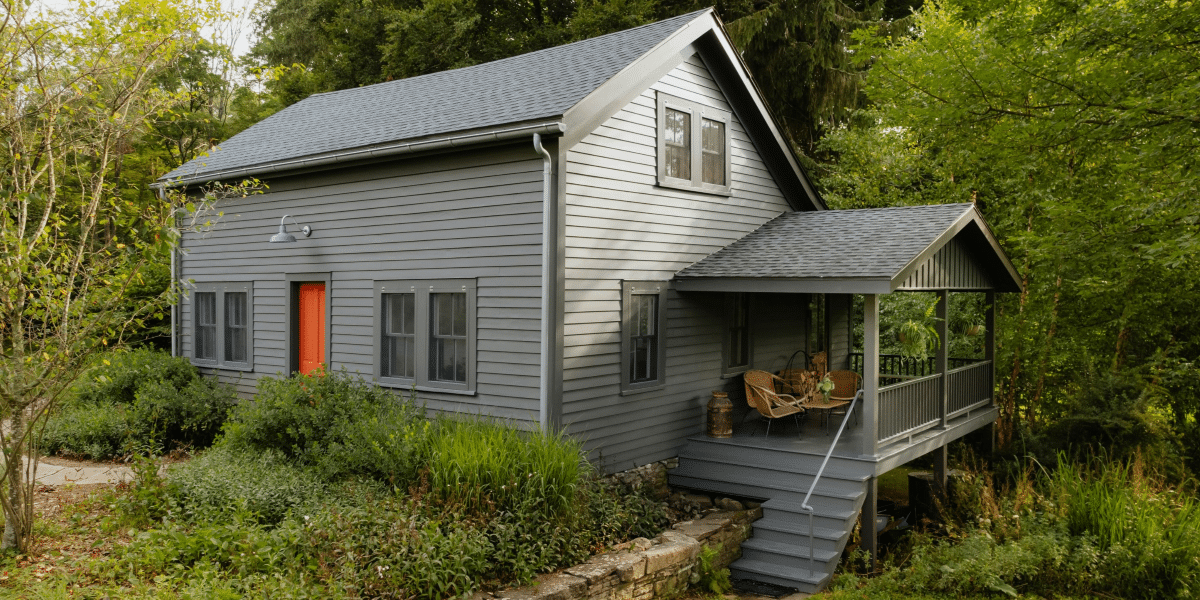Choosing the Best Wood Plank Exterior Siding: A Comprehensive Guide

Embark on a journey through the world of wood plank exterior siding, where the beauty of nature meets the functionality of home design. Learn about the different types of wood, installation processes, maintenance tips, and design options that will transform your exterior into a stunning masterpiece.
Dive deeper into the realm of wood plank exterior siding to discover the perfect balance between aesthetics and durability for your home.
Types of Wood Plank Exterior Siding
Wood plank exterior siding is a popular choice for adding a natural and rustic look to homes. Different types of wood are commonly used for exterior siding, each with its own advantages and disadvantages. Let's explore some of the popular wood species used for siding.
Cedar
Cedar is a popular choice for wood plank exterior siding due to its natural resistance to decay and insects. It is lightweight, easy to work with, and has a beautiful natural finish. However, cedar can be more expensive compared to other wood types.
Pine
Pine is another common wood used for siding. It is affordable and readily available, making it a popular choice for budget-friendly projects. However, pine is not as durable as cedar and may require more maintenance over time.
Redwood
Redwood is known for its rich color and natural beauty, making it a sought-after choice for exterior siding. It is also resistant to decay and insects, similar to cedar. The only drawback is that redwood can be quite expensive.
Oak
Oak is a hardwood that is durable and long-lasting, making it a great option for exterior siding. It provides a classic and timeless look to homes. However, oak can be heavy and more challenging to work with compared to softer wood species.
Wood Composite
Wood composite siding combines wood fibers and synthetic materials to create a durable and low-maintenance option for exterior siding. It mimics the look of real wood but requires less upkeep. However, it may not have the same natural aesthetic as solid wood.
Installation Process
When it comes to installing wood plank exterior siding, there are several key steps to follow to ensure a successful and long-lasting result.
Surface Preparation
Before installing the wood planks, it is crucial to prepare the surface properly. This includes cleaning the existing exterior, removing any old siding or debris, and ensuring that the surface is smooth and level. Any repairs or replacements needed should be addressed before proceeding with the installation.
Cutting and Fitting
When it comes to cutting and fitting the wood planks, precision is key. Measure each section carefully before cutting to ensure a perfect fit. Use a saw appropriate for cutting wood and make sure to wear safety gear. Additionally, be mindful of any patterns or designs in the wood and plan the layout accordingly to achieve a cohesive look.
Installation
Once the surface is prepared and the wood planks are cut to size, it's time to start the installation process. Begin at the bottom of the wall and work your way up, ensuring each plank is level and securely attached.
Use appropriate nails or screws to secure the planks in place, following any manufacturer's recommendations for spacing and attachment.
Finishing Touches
After all the wood planks are installed, take the time to inspect the work and make any necessary adjustments. Seal any gaps or joints with caulking to prevent water infiltration and ensure the siding is properly weatherproofed. Finally, consider applying a protective finish to the wood to enhance its longevity and maintain its appearance over time.
Maintenance and Care
Proper maintenance and care are essential to ensure the longevity and appearance of wood plank siding. By following a few simple steps, you can protect your siding from damage and keep it looking its best for years to come.
Regular Inspections and Repairs
Regularly inspect your wood plank siding for any signs of damage, such as cracks, rot, or pests. Addressing these issues promptly can prevent further damage and extend the lifespan of your siding.
Protecting from Moisture
To protect wood siding from moisture, make sure it is properly sealed and painted. Regularly inspect the paint for peeling or cracking, as this can expose the wood to moisture. Ensure that gutters are clean and functioning properly to prevent water from pooling near the siding.
Preventing Pest Infestations
To prevent pests from damaging your wood siding, keep vegetation trimmed away from the house and seal any cracks or openings where pests could enter. Consider applying a pest repellent treatment to the siding to deter insects and rodents.
Cleaning and Preserving
Regularly clean your wood plank siding with a mild detergent and water to remove dirt, dust, and grime. Avoid using harsh chemicals or power washers, as these can damage the wood. Apply a protective sealant or stain every few years to maintain the appearance and protect the wood from UV rays and weathering.
Design and Finishing Options
Wood plank exterior siding offers a versatile range of design and finishing options to enhance the overall aesthetic of your home's exterior. By exploring different design layouts and finishing techniques, you can create a cohesive look that complements the style of your property.
Design Options
When it comes to designing your wood plank exterior siding, you can consider various arrangements to achieve different visual effects. Some popular design options include:
- Horizontal Planks: Traditional and timeless, horizontal planks create a classic look for your home.
- Vertical Planks: Vertical siding can add height and a sense of elegance to your property.
- Board and Batten: This design features alternating wide boards and narrow strips for a rustic appeal.
- Diagonal Planks: Diagonal installations can add a unique and dynamic touch to your exterior.
Finishing Options
Once you have decided on the layout, it's time to choose the right finishing option to protect and enhance the wood. Common finishing options for wood plank exterior siding include:
- Paint: A versatile choice that allows you to customize the color of your siding to match your home's palette.
- Stain: Enhances the natural beauty of the wood while offering protection against the elements.
- Natural Finishes: For a more organic look, you can opt to leave the wood untreated or apply a clear sealant.
Cohesive Look Tips
To create a cohesive look with your wood plank siding and other elements of your exterior design, consider the following tips:
- Coordinate with Trim: Choose trim colors that complement your siding for a harmonious appearance.
- Blend with Landscaping: Incorporate plants, flowers, and outdoor elements that enhance the overall look of your home.
- Match Architectural Style: Ensure that the design of your wood plank siding aligns with the architectural style of your property for a unified look.
Concluding Remarks
As we conclude our exploration of wood plank exterior siding, remember that the right choice of wood can enhance the curb appeal and longevity of your home. With proper maintenance and thoughtful design, your exterior will stand out as a showcase of natural beauty and timeless elegance.
Question & Answer Hub
What are the best types of wood for exterior siding?
Cedar, redwood, and pine are popular choices due to their natural resistance to decay and insects.
How can I protect wood siding from moisture?
Regularly seal and stain the wood to create a barrier against moisture infiltration. Ensure proper ventilation to prevent trapped moisture.
What finishing options are available for wood plank siding?
You can choose between paint for a colorful finish, stain for a natural look, or leave the wood bare for a rustic appeal.
How often should wood plank siding be cleaned?
It is recommended to clean wood siding at least once a year using a mild detergent and water to maintain its appearance.

